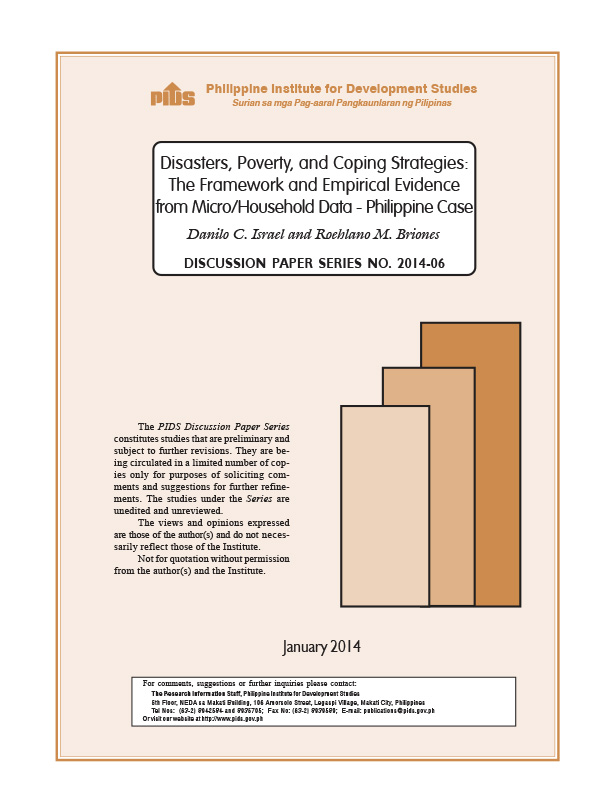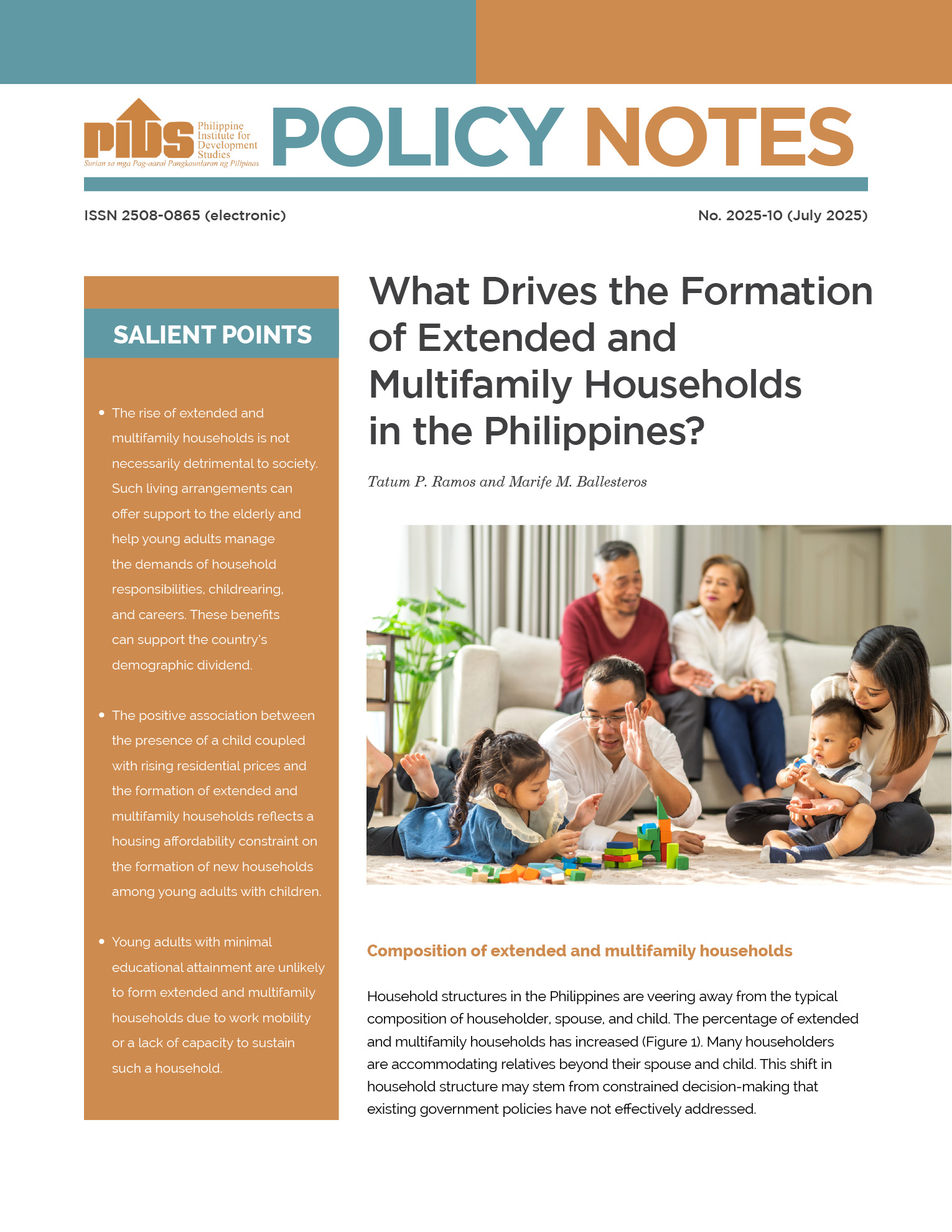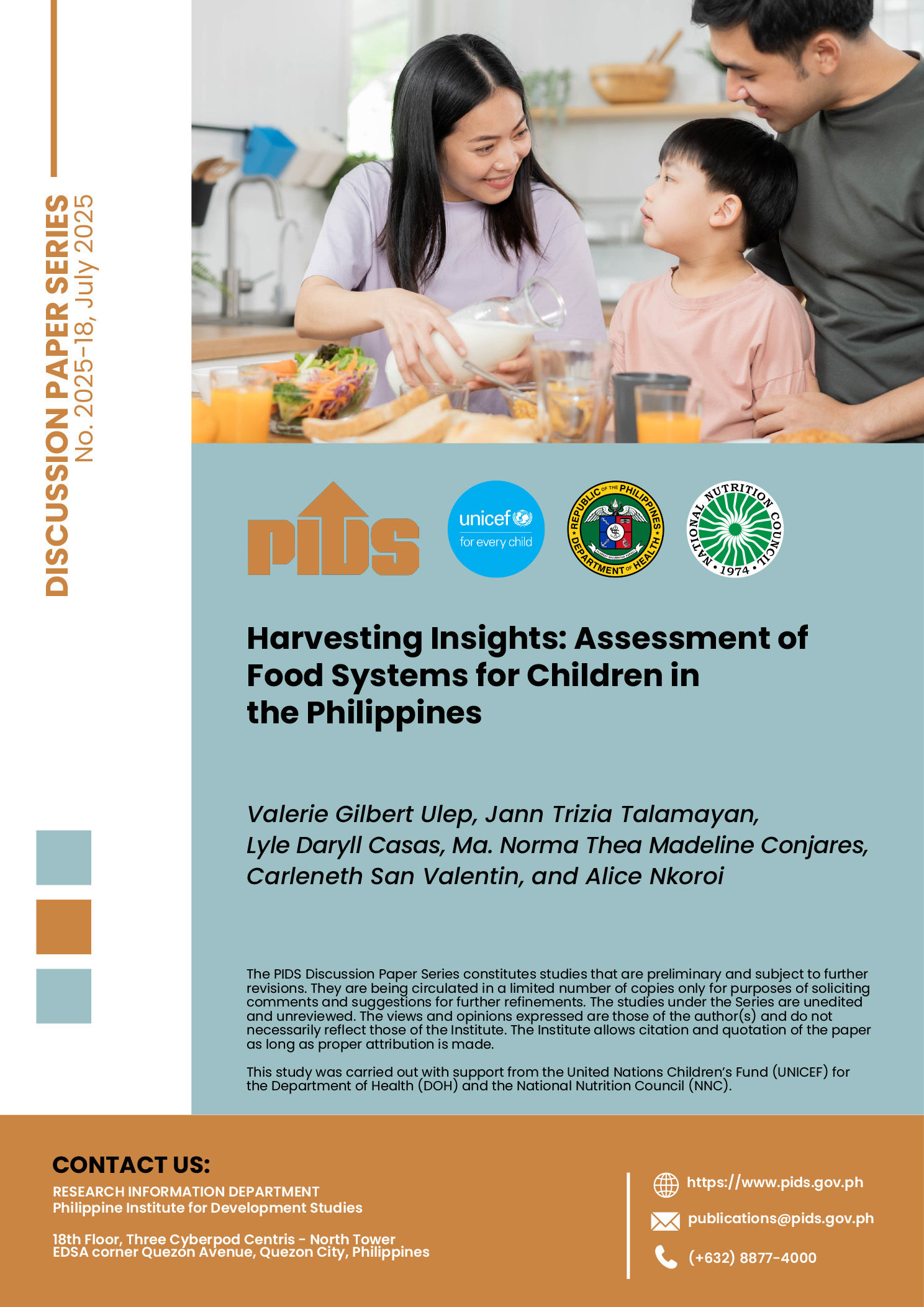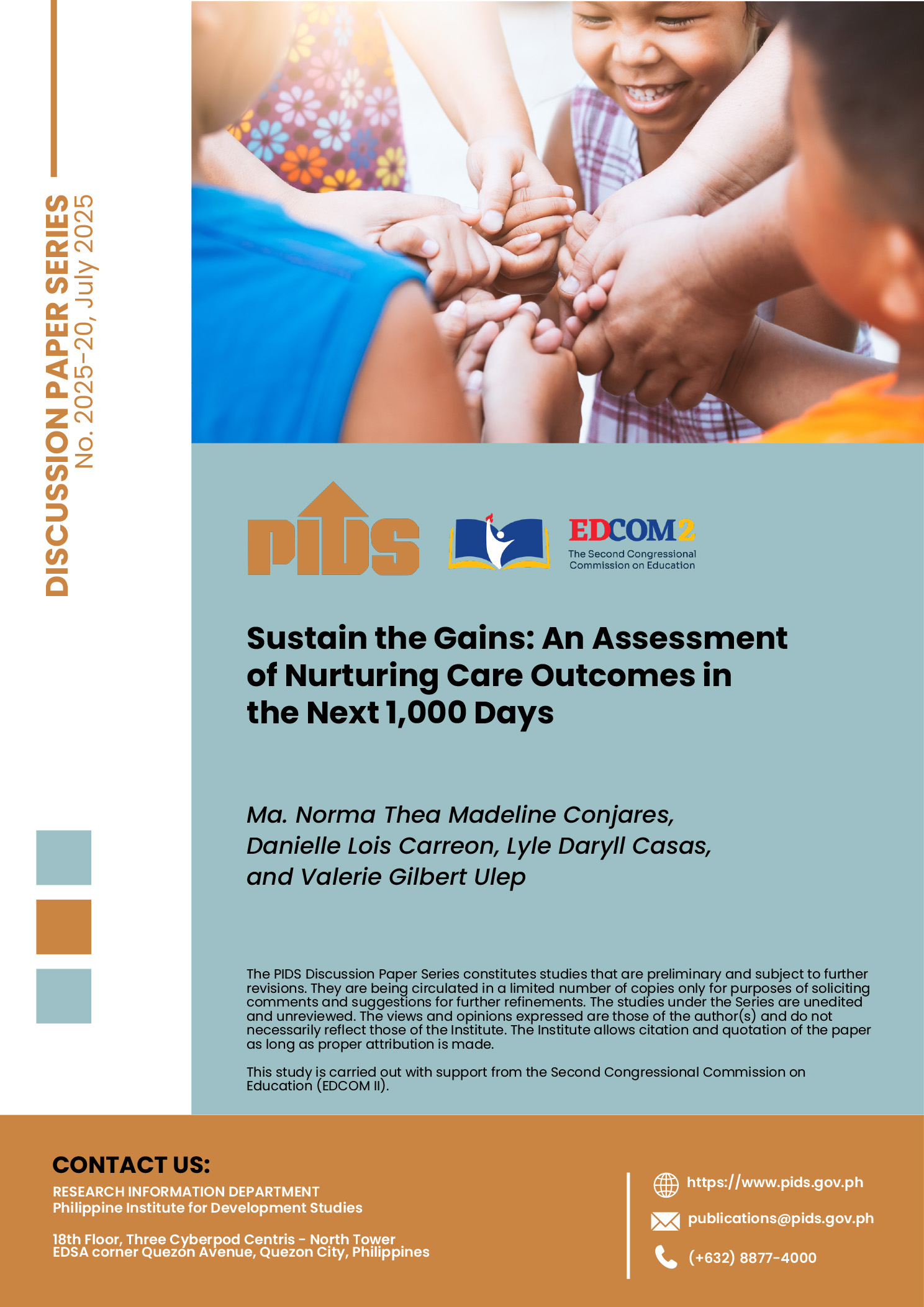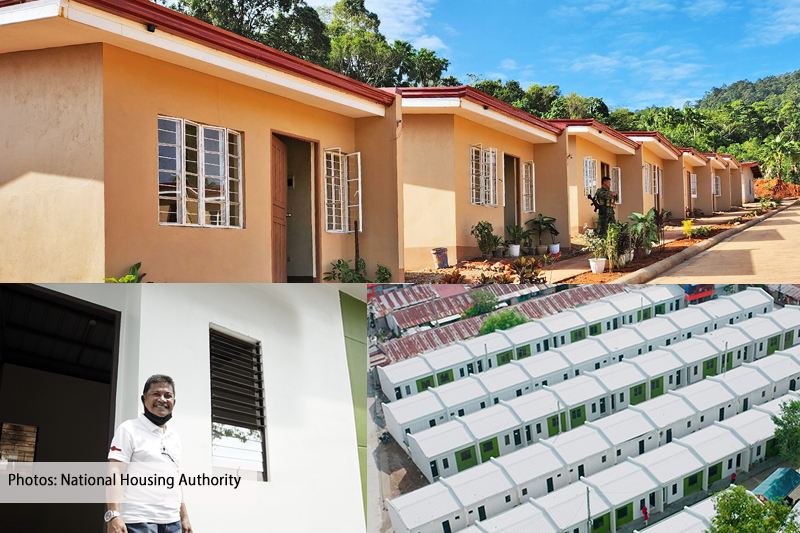This study analyzed the interactions between natural disasters and household poverty and discussed the coping strategies used by households in response to natural disasters in the Philippines. It used data from the 2011 CBMS Household Profile Survey for Pasay City, Metro Manila and results of relevant past studies. The study found that a) there are existing analytical frameworks for the study of the interactions between natural disasters, household poverty, and household coping strategies; b) some empirical studies have been done in the Philippines analyzing the aforementioned interactions; c) relevant past studies generally point to the negative effect of natural disasters on household income and subsequently on household poverty; and d) past studies also showed that households practice several coping mechanisms to address the effects of natural disasters.
Furthermore, based on own estimation done, the study found that the occurrence and frequency of typhoons and/or floods in Pasay City, Metro Manila have significant and negative effects on household per capita income. It concluded that for Pasay City and other similarly situated urban areas in the country, natural disasters have a negative impact on household income and consequently on household poverty. The study proposed future studies that can be conducted on the interactions between natural disasters and household poverty in the Philippines.
Citations
This publication has been cited 7 times
- Hyder, Ameer and Nasir Iqbal. 2016. Socio-economic losses of flood and household’s coping strategies: evidence from flood prone district of Pakistan. PIDE-Working Papers 2016:142. Pakistan Institute of Development Economics.
- Karim, Azreen. 2018. The household response to persistent natural disasters: evidence from Bangladesh. World Development, 103(C), 40-59 . Elsevier.
- Mandishekwa, Robson and Enard Mutenheri. 2021. The economic activities among mining-induced displacees in Arda Transau, Zimbabwe. Mineral Economics, 34, No. 1, 51-70 . Springer.
- Meerow, Sara . 2017. Double exposure, infrastructure planning, and urban climate resilience in coastal megacities: A case study of Manila. Environment and Planning A, 49, no. 11, 2649-2672.
- Noy, Ilan and Azreen Karim. 2013. Poverty, inequality and natural disasters: A survey. Working Paper Series 2974. Victoria University of Wellington, School of Economics and Finance.
- Yonson, Rio, Ilan Noy, and JC Gaillard. 2018. The measurement of disaster risk: An example from tropical cyclones in the Philippines. Review of Development Economics, 22, No. 2, 736-765 . Wiley Blackwell.
- Yonson, Rio, J. C. Gaillard, and Ilan Noy. 2016. The measurement of disaster risk: An example from tropical cyclones in the Philippines. Working Paper Series 4979. Victoria University of Wellington, School of Economics and Finance.

